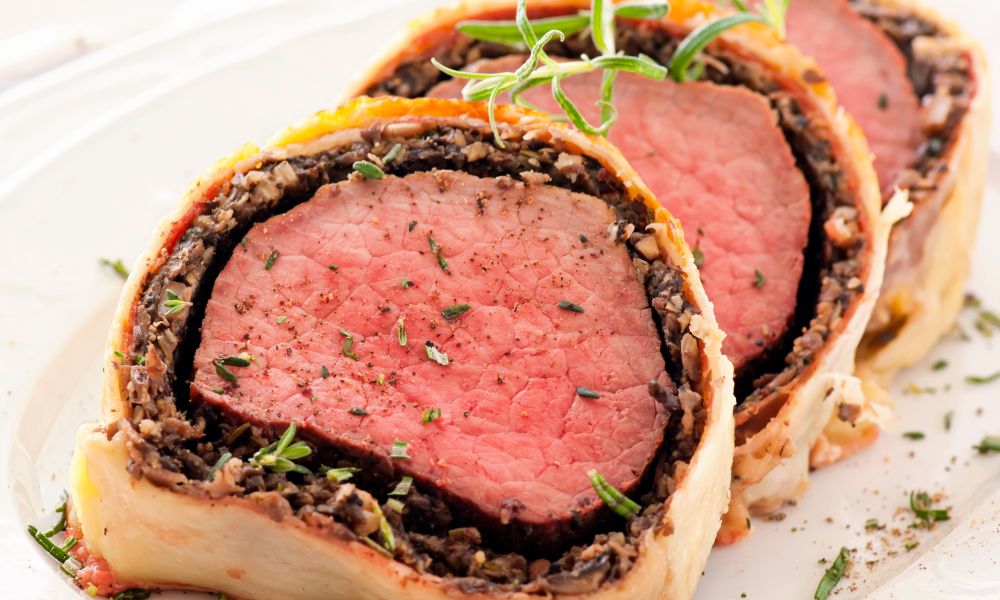Mouthwatering Beef Wellington has intrigued food connoisseurs for generations, offering a delightful combination of succulent beef wrapped in a delicious puff pastry. But have you ever wondered how this delectable dish came to be? Journey with us as we take a deep dive into the intriguing history of the Beef Wellington, exploring its origins, the story behind its name, its rise in popularity over time, and where it stands today in the world of contemporary cuisine.
Origins of the Beef Wellington
Though no one knows the exact origin of the Beef Wellington, the dish evolved from a culinary tradition of wrapping savory meat in pastry. Some historians believe that it could be a sophisticated descendant of the English meat pie combined with the French technique of using puff pastry. The French filet de boeuf en croute is a similar recipe for beef fillet covered in a mixture of minced mushrooms and wrapped in puff pastry.
Although there are various theories about how Beef Wellington got its name, perhaps the most popular one links it to Arthur Wellesley, First Duke of Wellington, who won the decisive Battle of Waterloo against Napoleon Bonaparte. Some believe the dish may have been named after the duke to celebrate the end of Napoleon’s imperial domination of Europe.
Mid-Century Popularity
Beef Wellington first gained prominence in the twentieth century amid the rise of dinner parties and a newfound appreciation for fine dining. It rose in popularity during the 1950s and ’60s, and chef Julia Child put a spotlight on the dish in her popular 1961 cookbook Mastering the Art of French Cooking and in a 1965 TV episode of her cooking show.
Presidents John F. Kennedy and Richard Nixon loved the meal, with Nixon serving Beef Wellington at state dinners. In recent years, Beef Wellington has experienced a resurgence in popularity thanks to its appearance on popular television shows and the rise of celebrity chefs.
Beef Wellington Today
At the heart of the classic Beef Wellington lies a center-cut beef tenderloin. This is typically seared to lock in juices and brushed with mustard for an added tangy dimension. The beef is then covered with a rich layer of minced mushrooms, also known as duxelles, that has been slowly cooked with other ingredients like shallots and garlic. Finally, this entire bundle is carefully enveloped in a thin, crisp layer of puff pastry, which turns golden and flaky when baked.
It’s a carefully crafted orchestra of flavors, each component playing its part to elevate the star of the dish: the beef. But in recent years, chefs have expanded upon the original recipe with modern twists that cater to evolving tastes and palates, including vegetarian and seafood versions.
The traditional Beef Wellington is time-consuming to make. Fortunately, in our modern, connected age, Wellingtons LA makes this savory meal accessible by offering Beef Wellington online. We’re proud to be part of this comfort food’s intriguing history, and now, having delicious Beef Wellington at home is as simple as ordering online and following the provided baking instructions in your kitchen.
